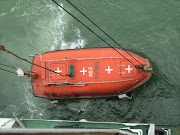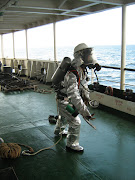17th August 2010
At Leixoes
At Leixoes
 | |||||||||||||||||||||||||||||||||||||||||||||||||||||||
info by marmedsa
Porto, PortugalPorto (Portuguese pronunciation: [ˈpoɾtu]), also known as Oporto, is the second largest city of Portugal (after Lisbon), with a population of 220,000 within its administrative limits on a land area of 41.66 km2 (16 sq mi). The urban area of Porto extends beyond the administrative city limits; with a population of 1.1 million[1][2] on an area of 389 km2 (150 sq mi),[1] it is the second-largest urban area in Portugal (after Lisbon urban area) and the largest in the northwest part of the Iberian Peninsula. About 1.3 million people live in the Porto Metropolitan Area.[3][4][5]
The city has the status of global city (in category of Gamma World Cities –). It located in the estuary of the Douro river, in northern Portugal. The city of Porto comprises 15 civil parishes. The historic centre of Porto was declared a World Heritage Site by UNESCO in 1996. One of Portugal's most internationally famous products, Port wine, is named after the city because it is produced in, and shipped from the area[6] or, more precisely, from Vila Nova de Gaia, a city just across the river which belongs to the same conurbation.
The Latin name of Porto, Portus Cale,[7] is the origin of the name "Portugal" for the whole country. In Portuguese, the city is usually referred to with the definite article as "o Porto" (the port), hence the English name "Oporto".
City Sightseeing Porto
Travel around Porto and Vila Nova de Gaia on a double-decker bus. Hop on and off the bus the times you wish and discover the best that these cities have to offer you: monuments, viewpoints, parks, beaches and riverfronts.
Duration : 90 min / 60 min
All the year round
Departures : 0h | 9h30 | 10h30 | 11h | 11h30 | 12h | 12h30 | 13h | 13h30 | 14h | 14h30 | 15h | 15h30 | 16h | 16h30 | 17h | 17h30 | 18h | 18h30
Price per person : € 13
1 ticket for 2 routes valid for 2 days.
Audio guided visits in Portuguese, English, French, Spanish, Deutsch, Italian, Japanese and Dutch.
Special conditions for groups.
Children (4-12): 6,50 €
Audio guided visits in Portuguese, English, French, Spanish, Deutsch, Italian, Japanese and Dutch.
Special conditions for groups.
Children (4-12): 6,50 €
Timetables:
April to October: 09:15am - 07:00pm
November to March: 09h15am - 05:00pm
April to October: 09:15am - 07:00pm
November to March: 09h15am - 05:00pm
Port wine (also known as Vinho do Porto, Porto, and often simply Port) is a Portuguese style of fortified wine originating from the Douro Valley in the northern provinces of Portugal.[1] It is typically a sweet, red wine, often served as a dessert wine, and comes in dry, semi-dry, and white varieties. Fortified wines in the style of port are also produced outside of Portugal, most notably in Australia, South Africa, Canada, India, Argentina, and the United States. Under European Union Protected Designation of Origin guidelines, only the product from Portugal may be labelled as Port or Porto.[2] Elsewhere, the situation is more complicated: wines labelled "Port" may come from anywhere in the world,[3] while the names "Dão", "Oporto", "Porto", and "Vinho do Porto" have been recognized as foreign, non-generic names for wines originating in Portugal.[4]
Port is produced from grapes grown and processed in the demarcated Douro region.[5] The wine produced is then fortified by the addition of a neutral grape spirit known as aguardente in order to stop the fermentation, leaving residual sugar in the wine, and to boost the alcohol content. The fortification spirit is sometimes referred to as Brandy but it bears little resemblance to commercial Brandies. The wine is then stored and aged, often in barrels stored in a cave (pronounced "ka-ve" and meaning "cellar" in Portuguese) as is the case in Vila Nova de Gaia, before being bottled. The wine received its name, "Port", in the latter half of the 17th century from the seaport city of Porto at the mouth of the Douro River, where much of the product was brought to market or for export to other countries in Europe. The Douro valley where Port wine is produced was defined and established as a protected region, or appellation in 1756 — making it the third oldest defined and protected wine region in the world after Chianti (1716) and Tokaj (1730).
The offices and Web site of Porto Tourism (this link will open in a new window) can help you plan your trip. The tourist office also sells the Porto Card, which offers free admission to municipal museums and discounts at participating businesses. You can buy a "1-Day Walker" card cheaply if you plan to ride the Metro or buses; other versions of the card include unlimited public transportation.
info by wikipoedia, porto tours




































